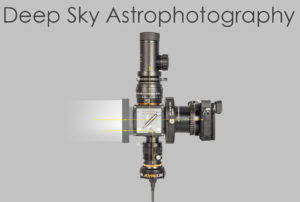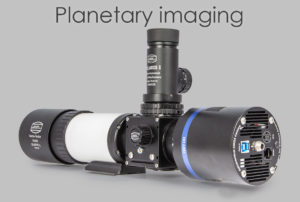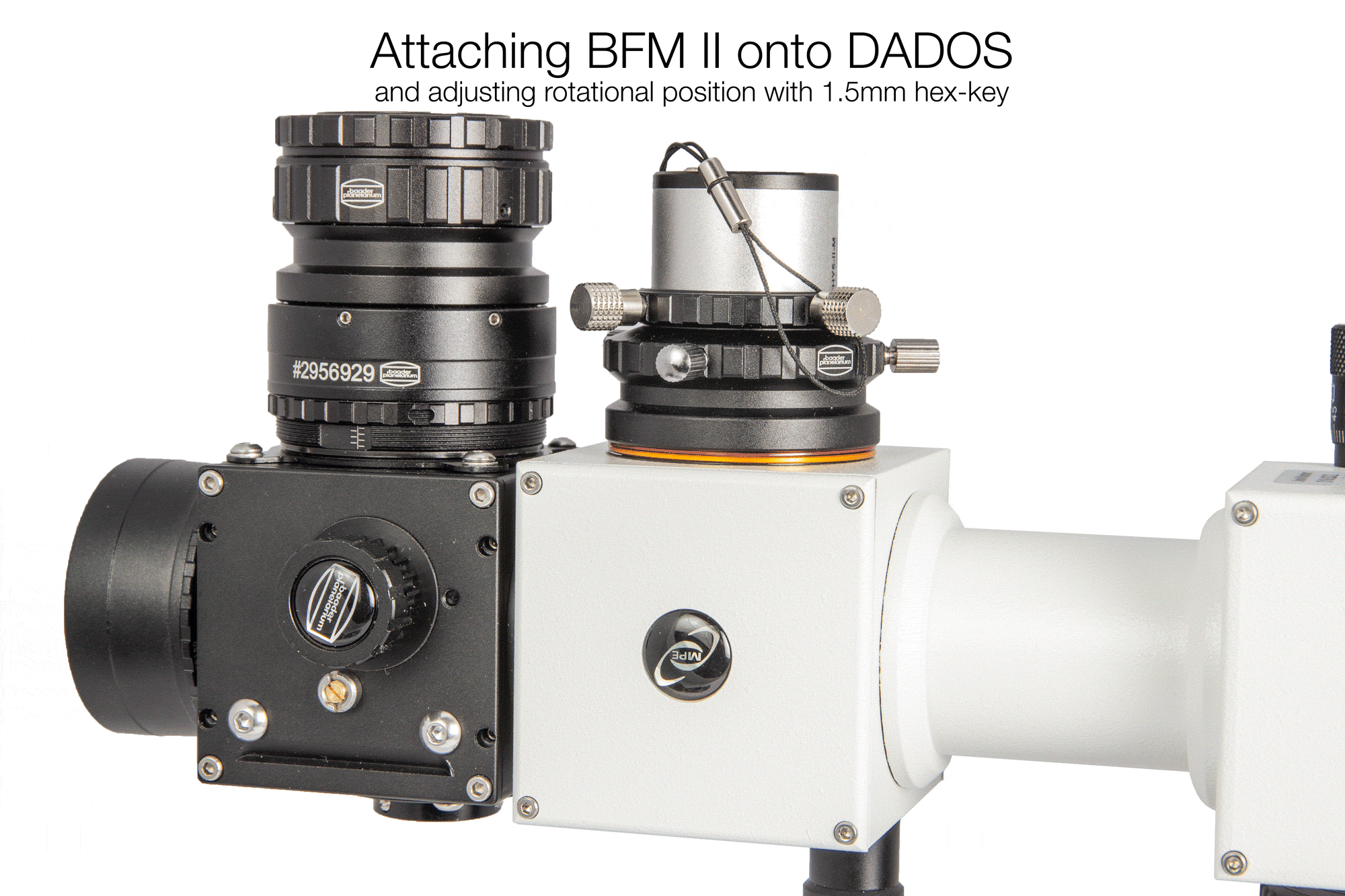Using the Baader FlipMirror II Star Diagonal (BFM II) at the Telescope
The Baader FlipMirror II Star Diagonal (#2458055 , € 228,-) is not only an accessory for professional users, but much more: It is a helpful tool for every amateur astronomer – especially for astrophotography.
First of all, the BFM II is designed to completely replace your standard star diagonal, so that you can keep observing as usual, just like with every good star diagonal. But the BFM II gives you much more options. You can create – from the beginnig, or step-by-step – your own system for photography and keep it always ready-for-use at your telescope. This will save you a lot of time and nerves. In the next months, we want to show some of the many options of this new product here.
In this article we will cover spectroscopy.
Benefits of the FlipMirror II for spectroscopy
Spectroscopy is one of the most instructive areas of astronomy. Besides professionals, spectroscopy is also interesting for schools, as it allows real data to be obtained and analysed. With the DADOS Slit – Spectrograph (#2458550 , € 2360,-) , Baader Planetarium as licensee of the Max-Planck-Institute for Extraterrestrial Physics in Garching has developed a compact and easy to use slit spectrograph, which is popular not only in the education sector.
With the Baader FlipMirror II Star Diagonal (#2458055 , € 228,-) , the DADOS can be mounted permanently on a telescope, which can still be use visually without reconfiguration. Especially on permanently installed devices, it is very helpful if all parts can remain on site and are securely screwed together. So nothing can get lost, even if several people are working on one telescope.
The fixed thread connection of the BFM-II also enables maximum torsional stiffness and shortest optical tube lengths. This prevents tilting, even with long attachments. Of course, it can also be used with standard 2" barrels.
The typical configuration is that the DADOS uses the straigt beam of light. All the necessary connections are thus available in the system for convenient operation:
- The upper part of the BFM-II is used e.g. for a cross-hair eyepiece
- The DADOS is connected straight at the rear port. The spectrograph has a port for an autoguider or a cross-hair / guiding eyepiece as well as another port for the camera recording the spectrum (or for an eyepiece to evaluate the spectrum qualitatively).
- The lower AUX-port of the BFM-II is usually used to connect an autoguider via the Off Axis Guider for Baader FlipMirror II (BFM-OAG)
(#2956951 , € 122,-)
. Since this Off-Axis-Guider is not needed with the DADOS, a calibration lamp can be connected instead. When the mirror is in the light path of the telescope, the light from the calibration lamp is directed into the DADOS when it is connected to the rear port. To avoid stray light, you should place the dust cover on the lens of your telescope. On simple spectrographs without their own guiding port, of course an autoguider can also be attached here.

The light from a calibration lamp can be directed to the spectroscope via the mirrored back of the hinged mirror
With the help of the BFM-II, all possibilities of the DADOS can be used comfortably. An adaptation for the DADOS: Baader Calibration lamp (#2458590 , € 32,-) of the DADOS is in preparation. For other calibration lamps you may have to make your own adaption, which can then be attached to the three M3 screw holes (radius 15mm) of the AUX-port.

Space-saving adaptation of the DADOS to a CPC1100HD. A second camera can be mounted at the rear port
If the spectrograph is already calibrated in advance, it is of course also possible to attach it to the upper connection instead of the eyepiece. This eliminates the possibility to calibrate it at the telescope, but it can be combined with a larger camera at the rear port. This is interesting if the visual view of the object is to be documented in real time with a full-format DSLR. We implemented this setup for school operation on a CPC1100 (see picture on the right). This also avoids the problem that the DADOS would bump into the fork base.
For smaller cameras up to APS-C it makes more sense to connect the regular camera to the upper T-2 connector for reasons of weight distribution.
Of course the FlipMirror II can also be used with many other spectrographs like the BACHES Echelle-Spectrograph (#2458600 , € 9485,-) .
About the author: Alexander Kerste
Alex is a studied biologist and works as a freelancer as an author, consultant and translator. After his studies and the publication of the Kosmos Starchart-Set in 2004, he was a regular freelancer for Astronomie Heute and the yearbook Der Himmel for the Spektrum-Verlag in Heidelberg. He is in charge of the Beginner courses on www.Astronomie.de and is a voluntary active member in the Robert-Mayer-Observatory since 1993. Since then, he has published a number of books on Celestron-Telescopes as well as Digiscoping and Astrophotography. One of his books on Astronomy with binoculars is also freely available at freebook.fernglasastronomie.de. In addition he supervises the Northern lights and star tours from Hurtigrute – these were also published in a travel guide, further articles can also be found on his blog kerste.de.















